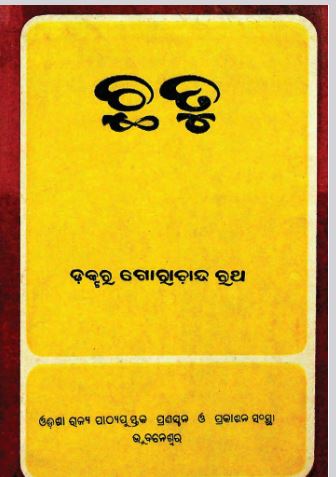In the rich tapestry of Odia literature, few books stand out like “Chhatu,” written by the distinguished author Gorachand Rath, and first published in 1981. This compelling novel deftly interweaves themes of food, poison, and cultivation, captivating readers with its profound storytelling and evocative prose.
“Chhatu” dives deep into the heart of rural Odisha, exploring the lives of farmers who toil under the sun to cultivate their lands. Rath’s narrative exposes the intimate connection between humans and the soil, illustrating how the land not only sustains life through food but also shapes cultural and social structures.
The title “Chhatu” itself is a reference to mushrooms, a poignant symbol within the book that represents both nourishment and potential danger. As edible fungi, mushrooms are closely tied to the agrarian lifestyle, providing a source of food that is naturally abundant yet requires knowledge and vigilance to harvest safely.
Rath’s exploration of food extends beyond sustenance, delving into the dichotomy of its nourishing and poisoning aspects. The narrative frequently oscillates between scenes of communal feasts and moments of scarcity and deprivation, reflecting the volatility of agricultural life.
The book portrays food as a powerful tool that wields social influence, highlighting socio-economic divisions and power dynamics within rural communities. The portrayal of the characters’ dependence on their crops underscores a critical reality—when the harvest is bountiful, prosperity follows; but when it fails, starvation and hardship ensue.
The theme of poison in “Chhatu” operates on both literal and metaphorical levels. Literally, the fear of poisonous mushrooms underscores the thin line between life and death. Farmers and villagers must possess a deep, almost instinctive knowledge of their environment, wary of nature’s hidden dangers.
Metaphorically, “poison” represents the insidious threats to rural harmony—corruption, greed, and exploitation. Rath masterfully portrays the outside forces that intrude upon the simple yet complex world of farming, bringing with them ruin and despair. This theme is a critique of the socio-political landscape of the time, a reflection on how external influences can devastate traditional ways of life.
Cultivation in “Chhatu” is depicted as a multifaceted theme. It is not solely about the physical act of farming but also about nurturing relationships, traditions, and the land itself. The farmers’ deep bond with their soil is portrayed almost as a sacred duty, a symbiosis where both the land and the cultivator thrive in mutual respect and care.
Through nuanced storytelling, Rath emphasizes the spiritual and emotional facets of cultivation. The characters’ lives are intertwined with the cycles of planting, growing, and harvesting, echoing the rhythms of life and death. The act of cultivation thus becomes a metaphor for growth, resilience, and the sustenance of cultural heritage.
“Chhatu” remains a timeless reflection on the complexities of rural life and the intrinsic bond between humans and their environment. Gorachand Rath’s poignant narrative, replete with deep-rooted cultural insights, sheds light on the perennial struggles and joys of farming communities.
For readers seeking to understand the deeper nuances of Odia culture and the enduring human spirit that connects us all to the earth, “Chhatu” is an essential read. Its themes of food, poison, and cultivation resonate universally, offering a profound commentary on the delicate balance that sustains life itself. As we journey through the pages of this literary treasure, we are reminded of the enduring power of storytelling to mirror the truth of our shared existence.
Books Info
| Books name | Chhatu |
| Author | Gorachand Rath |
| No Of pages | 201 |
| Publisher | NA |
| Publication | 1981 |
| Printed At | NA |
| Distributor | NA |

